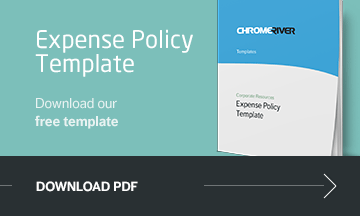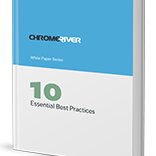 We’d all love to fly first class and eat steak dinners on somebody else’s dime, but if everyone did that, many companies would run out of cash pretty quickly. Therefore, creating a sensible expense policy is a must for any organization to both control costs and, as we recently said in our white paper, reduce business expense fraud. Without a clear policy, staff are left in the dark about what is and isn’t allowed, and will just assume how much they can spend. And we all know what “assume” does.
We’d all love to fly first class and eat steak dinners on somebody else’s dime, but if everyone did that, many companies would run out of cash pretty quickly. Therefore, creating a sensible expense policy is a must for any organization to both control costs and, as we recently said in our white paper, reduce business expense fraud. Without a clear policy, staff are left in the dark about what is and isn’t allowed, and will just assume how much they can spend. And we all know what “assume” does.
But what makes a good policy? You need to find the line between eliminating unnecessary costs and having a policy that is unreasonable or unworkable (both for the employees and for those who have to manage the policy). Too lax and your expenses will creep up, too tight and it won’t be workable, and your employees will hate it.

Here are seven things that you should consider when creating a business expense policy:
Beware of false economies
Although it may be tempting to impose policies such as the cheapest available airline ticket, this may not be the best solution. Although having a layover may reduce the cost of a ticket, if it means that your team members are spending an extra few hours traveling, that’s time they’re not out doing what you sent them to do – selling, keeping clients happy or solving problems. Is your employees’ time that much less valuable than the savings on the ticket? In addition, budget airlines often add in costs (such as charging even for hand luggage) that legacy carriers roll into their tickets.
Allow for different costs of living
The U.S. Government allows for different per diems dependent on location, and major cities such as San Francisco and New York can have a diem more than three times the standard rate of $89 per day (in fact New York’s highest per diem tops out at $306). Likewise, your expense policy should account for the fact that the cost of living in some U.S. and foreign cities can vary dramatically, and what could get you the Presidential Suite and a gourmet restaurant in one city could leave you in the Roach Motel eating a bag of chips in another. Two useful resources for this are the GSA’s per diem rates, and Numbeo’s global cost of living calculator.
Keep it specific
Ambiguities are a huge pain for both employees and administrators, and can lead to lots of back and forth to clarify rules or argue returned expenses. You should work with your team – including those who are on the road incurring expenses – to identify what should and shouldn’t be allowed, and create a specific list that everybody understands. This can range from how frequently in-hotel laundry can be expensed (e.g. weekly is acceptable, every other day isn’t), to what class of Uber ride you can take (e.g. Uber XL is fine if there are three people with bags traveling from an airport, but not if you’re just going from a hotel to a meeting).
Don’t make it too restrictive
Although expense policies are designed to control costs, they must be reasonable in the allowances they offer. If not, two possible outcomes are likely – employees will become resentful, and they may also try to find ways around the restrictions by fudging their expenses in other ways. For example, $10 for a lunch won’t allow for much more than a fast-food burger and fries in many cities, so $15-20 is more realistic. Also, consider where you stand on reimbursement for alcohol. While you obviously don’t want to encourage / pay for your employees to get smashed, one or two beers or glasses of wine with dinner is generally viewed as reasonable.
Education
Nobody likes nasty surprises, so you need to ensure that all staff are aware of the policy before they incur the charge and submit their reports. Make sure that all employees receive and acknowledge the policy as soon as they start. You also need to ensure that when you review and refresh the policy (which you should do every year, to update mileage reimbursement if nothing else), everyone receives a new copy.
Consistent enforcement
No policy will work long term unless it’s enforced fairly and consistently. This means that executives should be treated the same as rank-and-file staff (especially given our research shows that SVPs are the group most likely to fiddle their expenses).
Make it easy on yourself
Unless you’re a small company with a handful of staff who don’t travel much, manually administering an expense policy can become a logistical nightmare, as you spend hours cross-referencing expense report spreadsheets against per diem rates and other data points. Modern travel and expense management systems can have smart expense policy rules coded into them, so they know which items to allow and how much they are allowed to be (even down to the location of where they are incurred). This means that should anyone try and submit an expense that’s too high, they will be notified in the system, and will need to submit an explanation. This not only helps with enforcement, but also reduces the likelihood of conflict with the approver.
If your company needs to refresh its expense policy, take a look at the expense policy template that you can download here.
Subscribe
Latest Posts
Posts by Category
I just love the Chrome River application. I could probably sell it! Finance Administrative Coordinator Law Firm, 800 Employees
Can’t we just move year-end, so that we can roll out Chrome River sooner!? Financial Systems Director Law Firm, 300 Employees

Comments